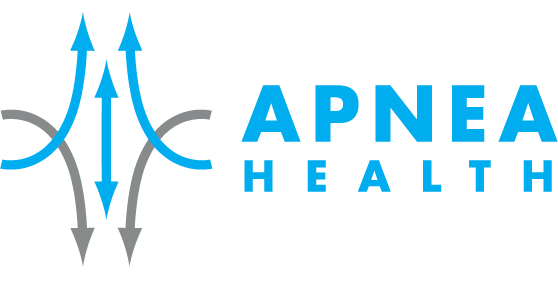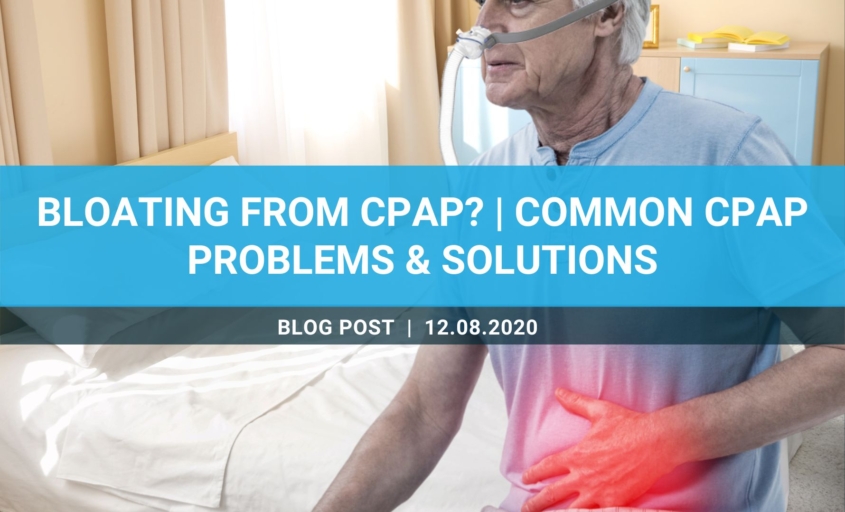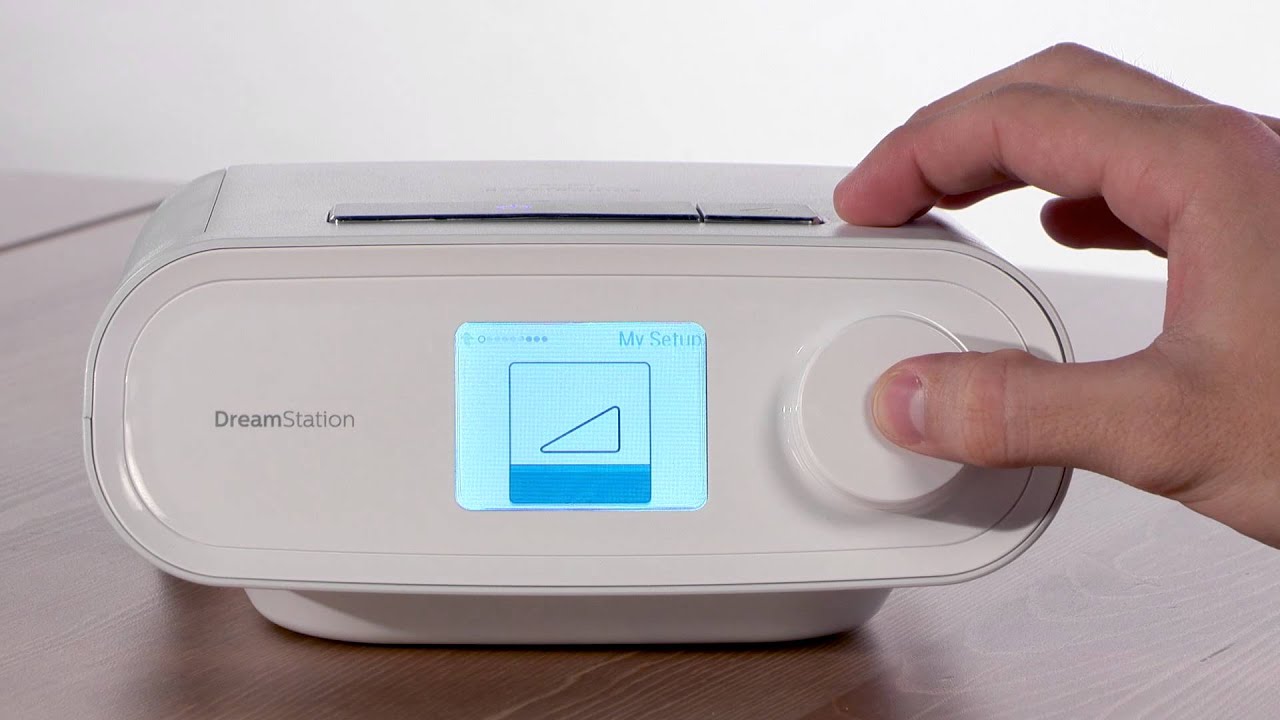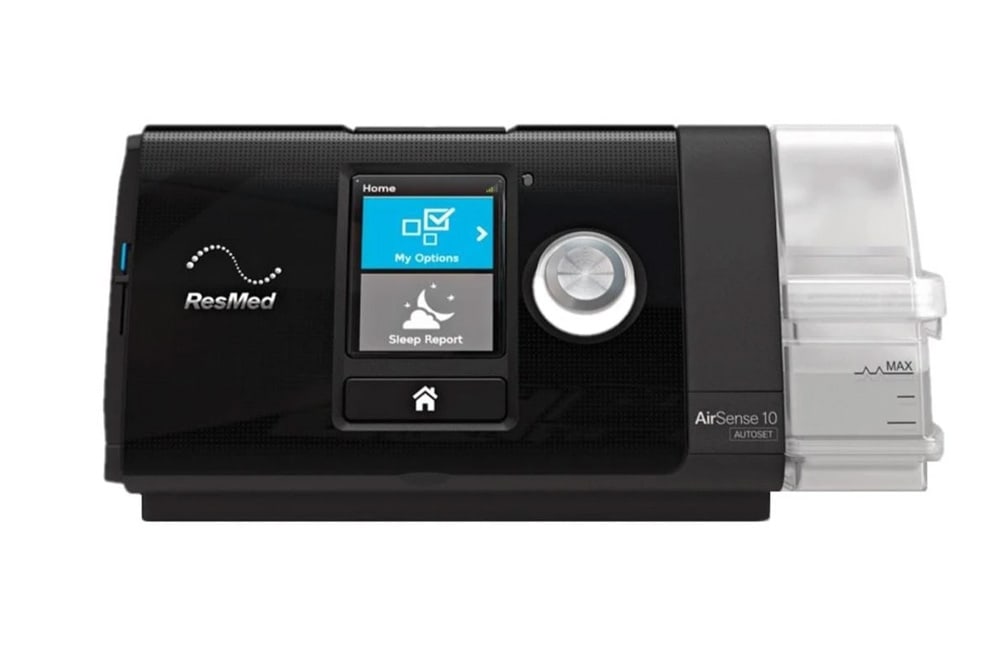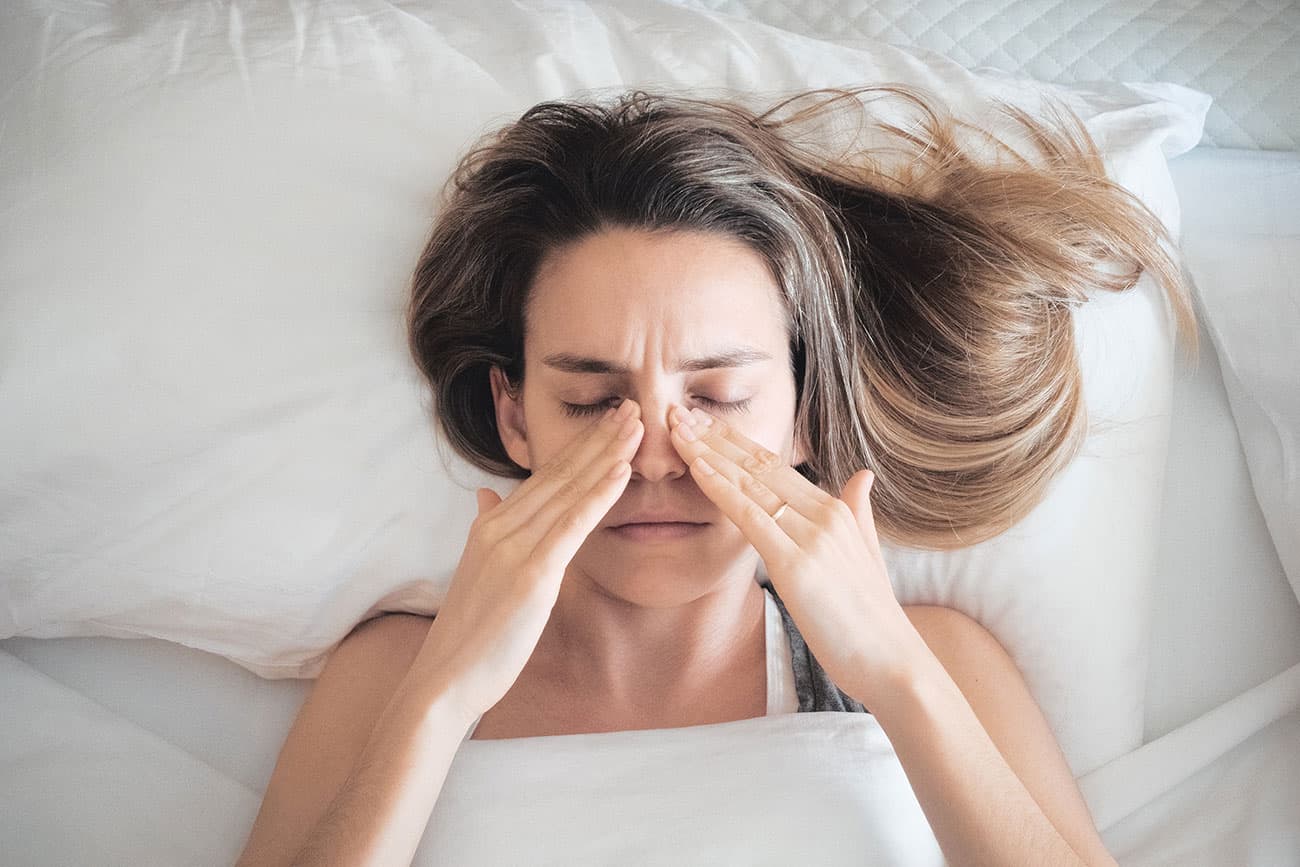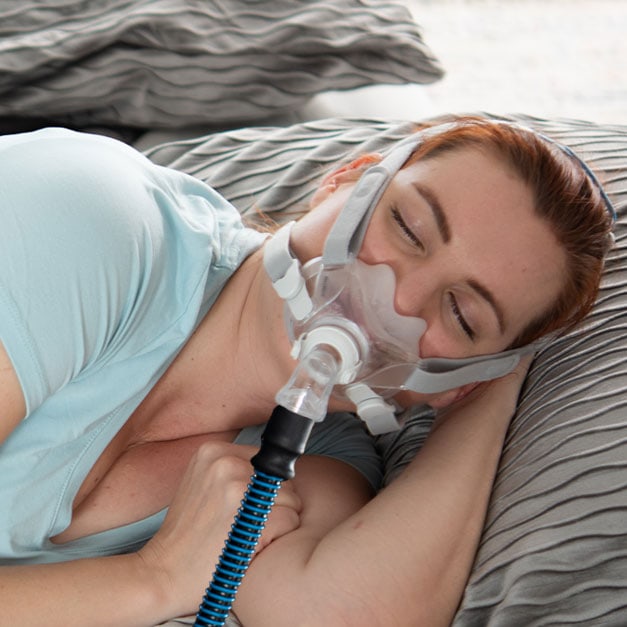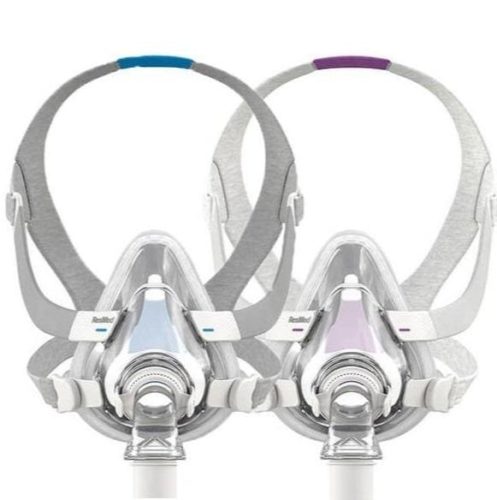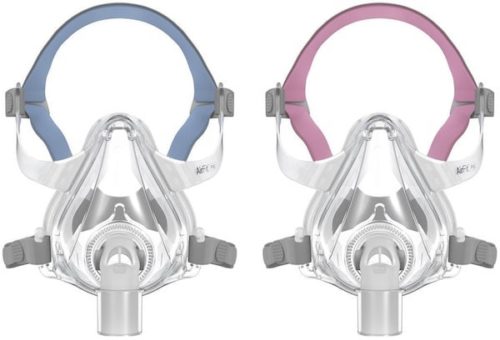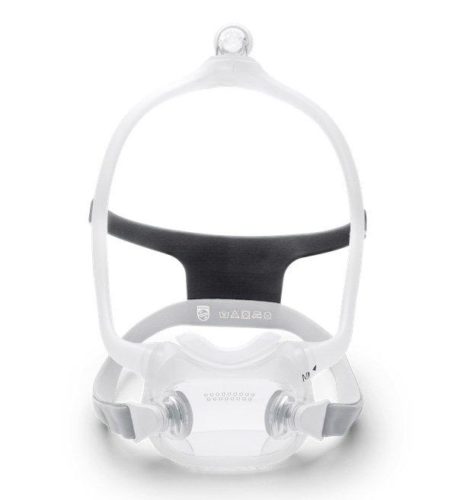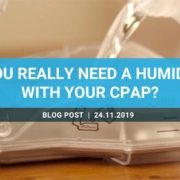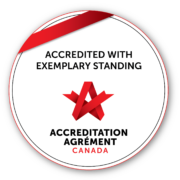Bloating From CPAP? | Common CPAP Problems & Solutions
Ever wake up feeling like there’s a tornado in your stomach?
Or when you use your CPAP, do you notice…
- Stomachache or bloating
- Burping or flatulence
- Heartburn or acid reflux
These are all symptoms of aerophagia, or air eating, which is a common CPAP side effect. Aerophagia occurs when air flows into your stomach and intestines instead of your airways during the night. As air builds up, it can cause discomfort in your belly and bowels.
- What causes this bloating and how can I fix it?
- How to fix your aerophagia when pressure too high or low:
- Other possible causes are nasal congestion and mouth breathing, both of which have the same solution.
- How to fix your aerophagia for congestion or mouth breathing?
- Shop other options of Full Face Masks
- Takeaway
What causes this bloating and how can I fix it?
- Pressure is set too high: Your CPAP pressure could be set too high or higher than you need. The extra air you get has no place to go, but to your esophagus and then belly.
- Pressure is set too low: You may have your pressure set too low where it’s too inadequate to resolve your apnea episodes. As you’re trying to obtain more air in your lungs, you end up quickly gulping air which is then forced into your esophagus.
- Exhalation problems: You might be having trouble exhaling over the consistent air pressure CPAP delivers. This is particularly hard for individuals using mid- to high-CPAP pressures. When you inhale high pressures, it might be simple, but exhaling might cause panic, anxiety and a feeling of choking or suffocation. When this occurs, you might fall out of your natural breathing rhythm and start hyperventilating. This may lead to quickly gulping or sucking in the air, forcing it into your esophagus instead of your lungs.
How to fix your aerophagia when pressure too high or low:
-
Enable advanced comfort settings in your device.
If you’re having trouble exhaling but your pressure level is already matching your needs, then we can enable settings such as EPR, which stands for Expiratory Pressure Relief. EPR is a standard feature on ResMed’s Airsense 10 AutoSet that reduces the pressure of your therapy only when you exhale. The AirSense has other advanced comfort settings, such as:
- Auto-titration: Smart algorithm automatically adjusts your therapy pressure as your needs change
- Humidification: 8 levels of humidity and an optional heated tube ensures you don’t dry out
- AutoRamp: Starts your sleep therapy at a low pressure to ensure you fall asleep more comfortably
The Respironics Dreamstation also has a new revolutionary exhalation release feature called P-FLEX technology, auto-titration, auto-amp and 5 humidification.P-Flex technology: is a unique comfort feature that applies exhalation pressure relief in proportion to pressure. P-Flex is designed to enhance comfort by reducing exhalation pressure. But unlike other versions of Flex algorithm, P-Flex applies increased amounts of pressure relief as therapy pressure increases. The higher the pressure, the greater the pressure support. This results in a more comfortable and effective therapy experience.
The SleepStyle also has a special advanced comfort setting:
SensAwake: With this function, the device quickly decreases the pressure to the lowest and most comfortable level when you wake up during the night. It thus facilitates the return to sleep and allows effective resumption of treatment. You are less likely to wake up in a panic with high pressure and open your mouth which would cause aerophagia. We did a clinical experiment. We offered a trial of the Sleep Style to some of our patients who suffered from aerophagia. In all cases, the patients saw great improvement and even disappearance of their aerophagia problem. It seems that the intelligent Sleep Style algorithm is ideal for patients afflicted with this problem. -
Use a CPAP that adjusts your pressure throughout the night.
If the pressure levels aren’t tailored to your needs, then your chance of swallowing air accidentally in the night increases. The best solution is upgrading to an auto CPAP. An auto CPAP will automatically titrate, or adjust, the pressure, so you always get the correct pressure night after night. It can even adjust to your sleeping position or how tired you are that evening.
These machines are programmed with a sophisticated algorithm that monitors your breathing in order to determine the most comfortable and effective settings for you at any given moment. The constant adjustments of the auto CPAP are essential to ensure that you continue to get the most out of your CPAP therapy.
Other possible causes are nasal congestion and mouth breathing, both of which have the same solution.
Nasal congestion
You could have nasal congestion from allergies, a cold or the flu. When you have a stuffy nose, you might not be able to get the right CPAP air pressure you require, therefore you gulp in the air by mouth, leading it down into your esophagus.
Mouth Breather
You might be a mouth breather and wear a traditional nasal mask. When your mouth opens up while you’re sleeping, the CPAP machine may not be able to deliver the air to your lungs, but rather the air escapes through your mouth. Your apnea episodes aren’t being corrected, therefore in your unconscious panic; you could suddenly experience a choking sensation and gulp the air in rapidly, forcing it into your esophagus.
How to fix your aerophagia for congestion or mouth breathing?
It’s very simple: make sure you are using the right mask!
If you have a nasal cushion mask but your mouth opens during the night, you can end up gulping air as the therapy escapes out your mouth. Similarly, nasal pillow masks with blocked exhale ports can have the same problem, forcing your mouth open during the night. A full face mask, such as ResMed’s AirFit F30i, will enable you to breathe out through your mouth instead of swallowing the air. The AirFit F30i features:
- Under-the-nose full face cushion: Reduces red marks and irritation on the nasal bridge
- QuietAir technology: Makes for a quieter experience for you and your bed partner
- Quick-release elbow and universal headgear: Makes taking your mask on and off easier than ever
Shop other options of Full Face Masks
Takeaway
The most common culprit is your exhaled air not escaping the CPAP system when you breathe out. Pressure problems (both too high and too low), sinus blockage, and mask issues can all lead to aerophagia.
Figuring out what’s causing your aerophagia is essential to resolve it. Extreme air swallowing can be very uncomfortable, particularly if your CPAP settings aren’t optimized. Be sure to talk with your respiratory therapist at Apnée Santé about this problem to help determine the causes and solutions unique to you.
You can also call your local clinic or fill out the form below and we will follow up with you:
